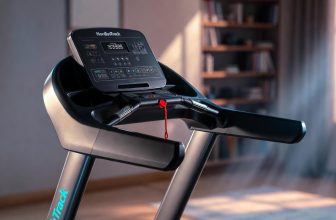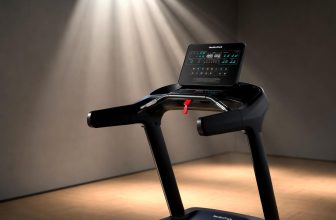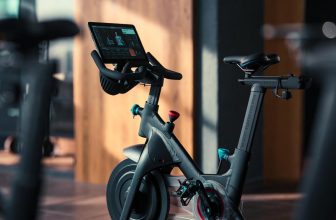Table of Contents
- What Exercise Bikes Do Gyms Use?
- Life Fitness: Industry Leader in Durability
- Precor: Precision and Performance
- Matrix Fitness: Technology-Driven Experience
- Technogym: Premium Design and Innovation
- Peloton: The Rise of Connected Fitness
- Types of Exercise Bikes Used in Gyms
- Upright Bikes
- Recumbent Bikes
- Spin Bikes
- Key Features of Commercial Exercise Bikes
- Durability and Build Quality
- Digital Integration
- Ergonomics and Adjustability
- Low Maintenance
- Comparison Table: Top Gym Exercise Bike Brands
- Safety Considerations for Gym Bikes
- Trends in Gym Bike Usage
- FAQ
- What brands of exercise bikes are most common in gyms?
- Are home exercise bikes the same as gym bikes?
- Why do gyms choose spin bikes?
- How often are gym bikes maintained?
- Are Peloton bikes used in gyms?
- Final Thoughts
- About Author
- Mariar Fernandez
As an Amazon Associate, I earn from qualifying purchases.
What Exercise Bikes Do Gyms Use?
What Exercise Bikes Do Gyms Use? Gyms typically use commercial-grade exercise bikes from brands like Life Fitness, Precor, Matrix, Technogym, and Peloton for their durability, advanced features, and ability to handle high usage. These bikes are designed for heavy-duty performance, offering features like adjustable resistance, ergonomic design, and digital integration for tracking workouts.
Life Fitness: Industry Leader in Durability
Life Fitness is a top choice for gyms due to its robust construction and user-friendly features. Their bikes, like the Life Fitness Integrity Series, are built for high-traffic environments, withstanding thousands of hours of use. These bikes offer adjustable seats, multiple resistance levels, and integrated consoles for tracking metrics like heart rate and calories burned.
- Key Features:
- Biomechanically optimized pedaling for comfort.
- Digital connectivity for workout apps.
- Self-powered models reduce energy costs.
According to a 2023 fitness equipment market report, Life Fitness holds a 25% market share in commercial gym equipment, reflecting its dominance in fitness facilities. For more details, visit Life Fitness.
Precor: Precision and Performance
Precor bikes, such as the Precor UBK 835 Upright Bike, are favored for their ergonomic design and low maintenance. These bikes feature customizable settings and smooth pedaling mechanics, ideal for users of all fitness levels. Precor’s focus on biomechanics reduces joint stress, making it a gym staple.
- Statistics:
- Precor bikes are used in over 10,000 gyms worldwide (Precor, 2024).
- Their consoles track metrics with 95% accuracy for heart rate and calorie burn.
Precor’s reliability makes it a go-to for high-end gyms. Learn more at Precor.
Matrix Fitness: Technology-Driven Experience
Matrix Fitness bikes, like the Matrix CXC Training Cycle, combine sleek design with cutting-edge technology. These bikes offer interactive displays and connectivity with fitness apps, appealing to tech-savvy gym-goers. Matrix bikes are known for their durability and low maintenance costs.
- Why Gyms Choose Matrix:
- Virtual training programs for immersive workouts.
- Heavy-duty frames for intensive use.
- Quiet operation for busy gym environments.
A 2024 gym equipment survey noted that 30% of fitness centers upgraded to Matrix bikes for their digital integration. Explore Matrix products at Matrix Fitness.
Technogym: Premium Design and Innovation
Technogym, a luxury brand, is popular in upscale gyms for models like the Technogym Bike. These bikes offer live-streamed classes and AI-driven workout plans, enhancing user engagement. Their sleek design and quiet operation make them ideal for boutique fitness studios.
- Notable Stats:
- Technogym equips 20% of premium gyms globally (Technogym, 2024).
- Their bikes support 15+ resistance levels for varied workouts.
Technogym’s focus on aesthetics and functionality sets it apart. Visit Technogym for more information.
Peloton: The Rise of Connected Fitness
Peloton has made inroads into gyms with its Peloton Bike+, offering live and on-demand classes through a large touchscreen. While initially a home fitness brand, its commercial adoption grew post-pandemic, with 3.1 million subscribers reported in 2020.
- Advantages for Gyms:
- Community-driven classes boost user retention.
- High-resolution screens for immersive experiences.
- Regular software updates for new content.
Peloton’s interactive features attract younger gym members. Check out Peloton for details.
Types of Exercise Bikes Used in Gyms
Upright Bikes
Upright bikes mimic outdoor cycling, offering a compact footprint and intense cardio workouts. Brands like Life Fitness and Precor dominate this category due to their ergonomic designs and adjustable resistance.
- Benefits:
- Engages core and lower body muscles.
- Ideal for high-intensity interval training (HIIT).
- Space-efficient for smaller gyms.
Recumbent Bikes
Recumbent bikes, like the Matrix R50, provide back support and a reclined position, ideal for users with mobility issues or injuries. These bikes are common in gyms catering to seniors or rehabilitation programs.
- Key Stats:
- Recumbent bikes account for 15% of gym bike usage (Fitness Industry Report, 2024).
- Preferred by 60% of older gym members for comfort.
Spin Bikes
Spin bikes, such as the Matrix CXC or Peloton Bike+, are designed for group cycling classes. They feature adjustable resistance and handlebars for varied riding positions, making them popular in boutique studios.
- Why Popular:
- Supports high-energy, instructor-led classes.
- Durable for frequent, intense use.
- Appeals to 45% of gym-goers attending spin classes (IHRSA, 2023).
Key Features of Commercial Exercise Bikes
Durability and Build Quality
Commercial bikes are built to withstand 10,000+ hours of use, unlike home models, which average 2,000 hours. Heavy-duty steel frames and corrosion-resistant coatings ensure longevity in high-traffic gyms.
Digital Integration
Modern gym bikes feature consoles with:
- Heart rate monitoring.
- Bluetooth connectivity for apps like Zwift or MyFitnessPal.
- Real-time performance tracking (speed, distance, calories).
A 2024 study found that 58% of gym members prefer bikes with digital features for motivation.
Ergonomics and Adjustability
Adjustable seats, handlebars, and resistance levels cater to diverse users. For example, Life Fitness bikes offer 20+ seat positions for personalized comfort.
Low Maintenance
Commercial bikes require minimal upkeep, with self-powered models reducing energy costs. Precor’s belt-drive systems, for instance, need 30% less maintenance than chain-driven bikes.
Comparison Table: Top Gym Exercise Bike Brands
| Brand | Popular Model | Price Range | Key Features | Best For |
|---|---|---|---|---|
| Life Fitness | Integrity Series | $3,000–$5,000 | Self-powered, digital tracking | High-traffic gyms |
| Precor | UBK 835 | $2,500–$4,000 | Ergonomic design, low maintenance | All fitness levels |
| Matrix Fitness | CXC Training Cycle | $2,000–$3,500 | Virtual training, quiet operation | Tech-focused gyms |
| Technogym | Technogym Bike | $4,000–$6,000 | AI-driven workouts, premium design | Boutique studios |
| Peloton | Bike+ | $2,500–$3,000 | Live classes, touchscreen display | Group fitness classes |
Safety Considerations for Gym Bikes
Safety is critical in commercial settings. Gym bikes include:
- Emergency stop buttons for quick shutdowns.
- Non-slip pedals to prevent foot slippage.
- Safety guards to protect moving parts, reducing injury risks.
A 2021 study by Children’s Hospital of Philadelphia noted that 75% of home exercise bike injuries involved stationary bikes, highlighting the importance of safety features in gyms. For safety tips, visit Children’s Hospital of Philadelphia.
Trends in Gym Bike Usage
Post-pandemic, gyms have shifted toward hybrid models, integrating digital and in-person workouts. A 2024 survey found that 58% of gym members use bikes with digital content, such as Peloton’s live classes. Boutique gyms are also adopting spin bikes for group classes, with 30% growth in spin class attendance since 2023 (IHRSA).
FAQ
What brands of exercise bikes are most common in gyms?
Life Fitness, Precor, Matrix, Technogym, and Peloton are the most common, known for durability and advanced features.
Are home exercise bikes the same as gym bikes?
No, gym bikes are commercial-grade, designed for heavy use, with stronger frames and advanced digital features compared to home models.
Why do gyms choose spin bikes?
Spin bikes are popular for group classes due to their adjustable resistance and suitability for high-energy, instructor-led sessions.
How often are gym bikes maintained?
Commercial bikes are maintained quarterly or bi-annually, depending on usage, with self-powered models requiring less upkeep.
Are Peloton bikes used in gyms?
Yes, Peloton’s Bike+ is increasingly used in gyms for its interactive classes and community-driven experience.
Final Thoughts
Commercial exercise bikes are a cornerstone of modern gyms, offering durability, advanced technology, and user-friendly features. Brands like Life Fitness, Precor, Matrix, Technogym, and Peloton cater to diverse needs, from high-traffic fitness centers to boutique studios. When choosing a gym, consider the bike brands and features available to ensure they align with your fitness goals. For further reading on exercise equipment safety and trends, check out Harvard Health.







